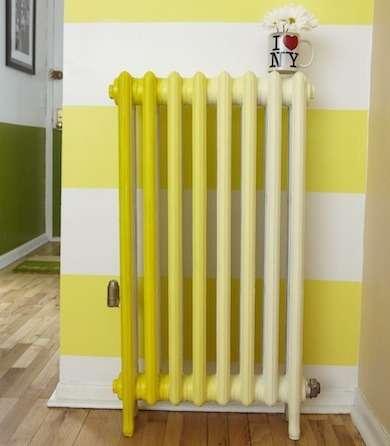 Central heating radiators have played an iconic part in some of this century’s most memorable interior design trends. From show-stopping cast-iron radiators painted in statement shades, to intricately carved radiator cabinets in rococo interiors, designers have been getting creative with their radiators ever since they became a household necessity.
Central heating radiators have played an iconic part in some of this century’s most memorable interior design trends. From show-stopping cast-iron radiators painted in statement shades, to intricately carved radiator cabinets in rococo interiors, designers have been getting creative with their radiators ever since they became a household necessity.
Unfortunately, this can be a little more difficult if you’ve got electric radiators. They can’t be painted because paint can leak into the wiring; they can’t be covered because the thermostat won’t work properly. However, we never say never, so we decided to take on the challenge of adapting five of the biggest interior-design-radiator makeovers to our electric radiators.
Painting your radiator
Interior designers have been painting radiators ever since they were invented. (Radiators, that is, not interior designers!) From neutral colours which help the radiator blend into its surroundings, to bright bold colours which turn the radiator into an eye-catching statement piece, radiator painting is an easy way to turn a purely functional item into an aesthetically pleasing feature.
However, this is not something you should do to an electric radiator. In fact, it’s not really something you should do with any radiator. Unless you’re sure you’ve found that perfect brand of paint that can withstand the radiator’s fluctuating surface temperatures without hindering its ability to radiate heat, then giving any sort of radiator a paint of coat is a quick way to reduce its efficiency. With electric radiators, of course, the prohibition against painting is even more urgent: not only can a paint-job reduce efficiency, but any paint leaking into the radiator’s electronics risks corrupting the thermostat and programmer. So while you really shouldn’t paint central heating radiators, you really really shouldn’t paint electric radiators.
So here’s our creative alternative. If you can’t paint the radiator, paint the room. This sounds like a lot of effort, but I know for a lot of our customers – especially those who are purchasing radiators to replace outdated storage heaters – a new set of heaters 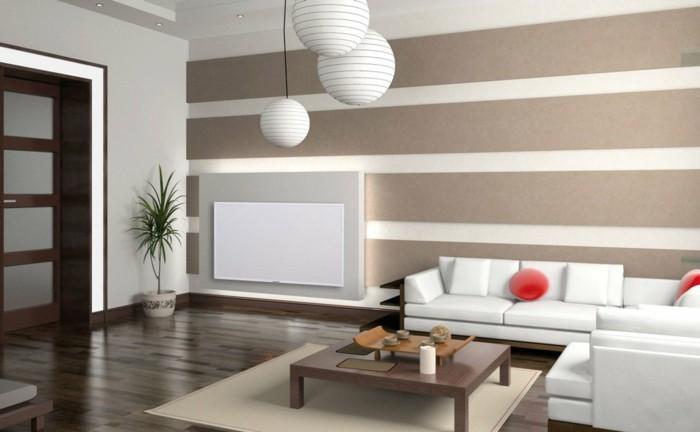 counts as a good excuse to update their interior design. All our designer radiators sport a bright white finish which is easy to co-ordinate with both modern and traditional designs schemes.
counts as a good excuse to update their interior design. All our designer radiators sport a bright white finish which is easy to co-ordinate with both modern and traditional designs schemes.
If you’re intent on hiding the radiators, why not hang them on a stretch of wall painted white? You don’t have to go for the whitewash effect – why not experiment with two-tone stripes or colour bands? You can hide your radiator in the white stripes and let the bolder colours dominate the mood of the room. We love the way these brown and white horizontal stripes help this plain white panel heater blend seamlessly into this modern living room.
Using a radiator cabinet
It’s an old-school idea that offers a wealth of interior design possibilities: from elaborate French-country style chiffoniers to minimalist modernist sideboards, a radiator cabinet gives you the opportunity to hide your radiator entirely and replace it with something much more decorative.
Unfortunately, heating wise, radiator cabinets are a real headache. They’re all right for old-fashioned storage heaters and other convector heaters which heat by warming the air – the air can still pass through the slats and will warm the room much the same 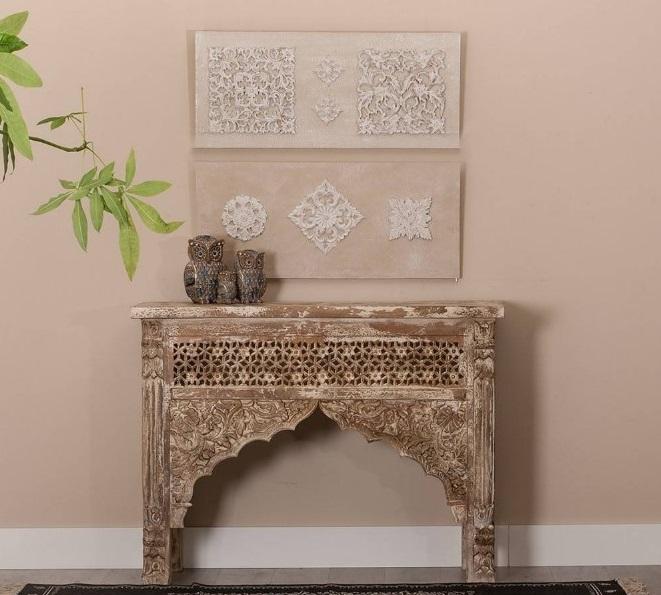 – but when used with a radiator, they will waste a huge amount of heating potential. Radiators deliver the majority of their heat through radiation – warming people directly with the heat that radiates from their front panels. If the radiator is covered, all of this heat will be wasted heating the front of the cabinet. Putting an electric radiator in a radiator cabinet isn’t just wasteful – it’s also a fire hazard.
– but when used with a radiator, they will waste a huge amount of heating potential. Radiators deliver the majority of their heat through radiation – warming people directly with the heat that radiates from their front panels. If the radiator is covered, all of this heat will be wasted heating the front of the cabinet. Putting an electric radiator in a radiator cabinet isn’t just wasteful – it’s also a fire hazard.
If you want a safe and stylish alternative that won’t affect the efficiency of your radiators, why not try an open-fronted cabinet? Effectively a table positioned over your radiator, an open cabinet like the one pictured here gives you plenty of style options to choose from without obstructing the front of your radiator. It also gives you a handy space to store everyday household essentials – really useful in a hallway or living room. This colonial piece by Ethnic Chic would make an excellent partner with one of our designer radiators – balancing the radiator’s stylish minimalism with whimsical rustic design. However, you’d need to be sure the radiator was entirely uncovered and the control panel was still accessible.
Hiding the radiator behind a curtain
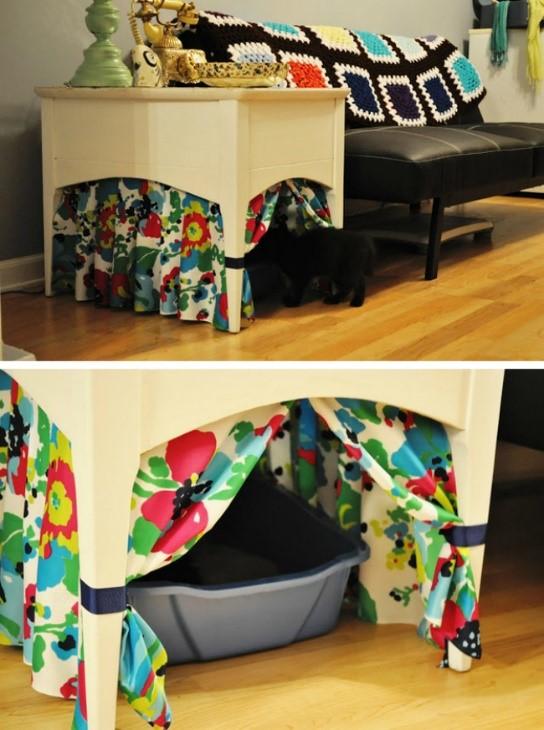 This quaint method of hiding household eyesores was used by our grandparents long before it started appearing in fashionable interior design mags. Commonly used to hide pipes, messy wiring and ugly kitchen appliances, some home improvement gurus are now adapting this trick to conceal their radiators.
This quaint method of hiding household eyesores was used by our grandparents long before it started appearing in fashionable interior design mags. Commonly used to hide pipes, messy wiring and ugly kitchen appliances, some home improvement gurus are now adapting this trick to conceal their radiators.
What’s the problem with this idea? Obviously, like using a cabinet, it’s a bad idea to cover the radiators – you waste their radiated heat output, and it’s a bit of a fire risk. Another problem with covering your electric radiator is that its thermostat will be unable to make an accurate reading of the room’s temperature. This means that the radiator will not switch on when the temperature in the room drops, leaving you chilly. You should only use a curtain to cover your radiators if you know the radiator is not going to be used for a long period of time. If you like to keep your radiators switched on all year round to top up the heat whenever the temperature drops, even in the warmest months, a curtain probably isn’t for you. But if you always keep the heating switched off over for summer, for example, using a curtain would be an excellent way to keep your radiator under wraps until the autumn.
With a wide range of fabrics available to suit all manner of interior design styles, curtains are versatile room accessories which offer plenty of scope for customisation. If you’re using a curtain to cover your radiator over the summer months, why not choose a vibrant summery fabric to signify the change in seasons? This home developer used a funky floral print to give her cat some privacy in its litter box – could you use a similar fabric to tuck away your radiators from May to September?
Hiding the radiator behind a sofa
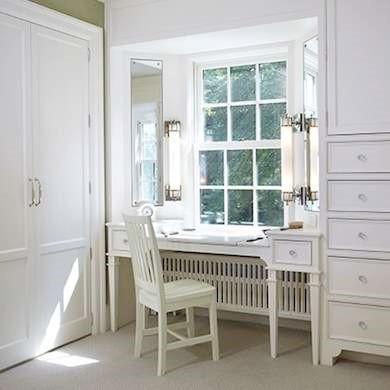 Ah, that familiar phrase that makes all heating experts flinch – “I’m just going to put it in the corner behind the sofa”. This trick is less of an interior design technique and more of a space-saving quick fix. What better way to pretend you don’t have radiators than to hide them behind your existing furniture?
Ah, that familiar phrase that makes all heating experts flinch – “I’m just going to put it in the corner behind the sofa”. This trick is less of an interior design technique and more of a space-saving quick fix. What better way to pretend you don’t have radiators than to hide them behind your existing furniture?
The problems with this “technique” are obvious. Not only do you block the heat output, confuse the thermostat, and, if you’re using an electric radiator, pose a fire risk, you also make it next to impossible to control your radiators without turning the room upside down.
Placing radiators behind furniture is a really bad idea – if you’re determined to do it, make sure you pick a piece of furniture such as a desk or table that doesn’t actually obstruct the radiator’s heat output – but make sure the table has good clearance over the radiator. This shabby chic dressing table is a perfect match for the dwarf-height radiator beneath it, giving the room a light and airy feel whilst allowing the radiator plenty of room to kick out heat.
If space is a real issue in your room, one option is to purchase a vertical radiator. A vertical radiator requires less horizontal wall space whilst providing you with plenty of radiated heat to keep the room toasty. Or alternatively, an infrared panel might be just the ticket if you're working with a fairly restrictive space. These ultra-slimline heaters can be mounted high up on the wall, or even on the ceiling, so there's plenty of scope to install them even in smaller rooms. Infrared panels are so sleek and stylish, you'll likely want to make them a main room feature rather than have them retreat behind your room furnishings.
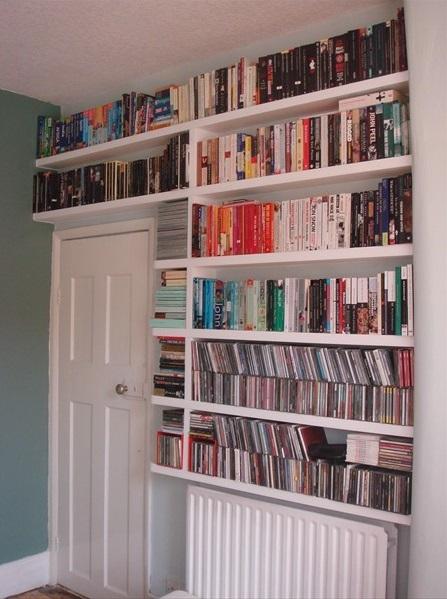 Build a shelf over your radiator
Build a shelf over your radiator
Fitting a shelf over your radiator is a great way of drawing your attention away from the heater without actually obscuring it. It also provides you with a practical room feature which allows you to reclaim the wall space occupied by your radiator.
This tip is a really handy one that doesn’t need any modification to make it safe to use with electric radiators! Just make sure you give the radiator plenty of space when you place the bottommost shelf. There’s no hard and fast rule about this, just use your common sense – the more space you leave at the top of the radiator, the easier it is for convection heat to distribute around the room.
There are all sorts of ways to adapt this tip to suit your home. You could style up a modern twist on the classic open fireplace by fitting a mantel shelf over your radiator and decorating it with ornaments. Or you could go the whole hog and fit your radiator into a ceiling height bookshelf for that home library effect!
Dare to bare
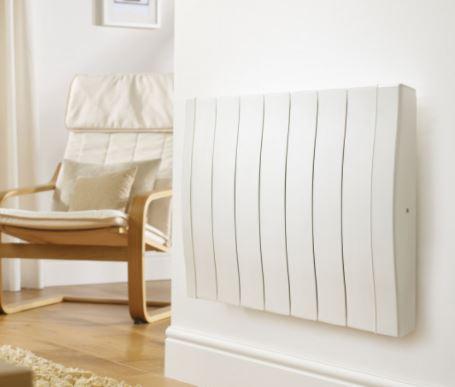 Sounds like a lot of effort? Remember, if all else fails, our heating manufacturers have gone to great lengths to create radiators with slimline, stylish designs, so why not be proud of your radiators and show ‘em off to the world! Our best-selling designer radiators are a world away from the corrugated steel boxes of yore, with elegant curves, a streamlined body and a bright white finish. And if you prefer more traditional styles, for retro and classical interiors, our range of Electrorad radiators offers something for houses of all 20th century periods.
Sounds like a lot of effort? Remember, if all else fails, our heating manufacturers have gone to great lengths to create radiators with slimline, stylish designs, so why not be proud of your radiators and show ‘em off to the world! Our best-selling designer radiators are a world away from the corrugated steel boxes of yore, with elegant curves, a streamlined body and a bright white finish. And if you prefer more traditional styles, for retro and classical interiors, our range of Electrorad radiators offers something for houses of all 20th century periods.
If you’ve got an ingenious strategy for hiding your radiators that we’ve not thought of, don’t keep it a secret! We’d love to hear your ideas, so why not share a comment below? Alternatively, if you’ve got a great interior design idea but are not sure how it will work with your electric radiators, why not join the debate and we’ll give you all the advice you need to make that idea a reality.
Image sources
1. https://s3-production.bobvila.com/slides/7438/widened/2147fd1b7367071644fff2ab44b34426.jpg?1395871107
2. http://www.apartmenttherapy.com/5-ways-to-paint-a-radiator-198900
3. http://www.freshdesignpedia.com/interior-design-ideas/25-radiator-panel-ideas-for-your-comfortable-home.html
4. https://www.homify.co.uk/ideabooks/223428/this-is-how-you-hide-ugly-radiators
5. http://www.homedit.com/ways-to-hide-your-cats-litter-box/
6. http://www.bobvila.com/slideshow/11-stylish-ways-to-enhance-or-hide-your-radiators-46992
7. http://www.fergaljoinery.com/fj-bookcases.html





